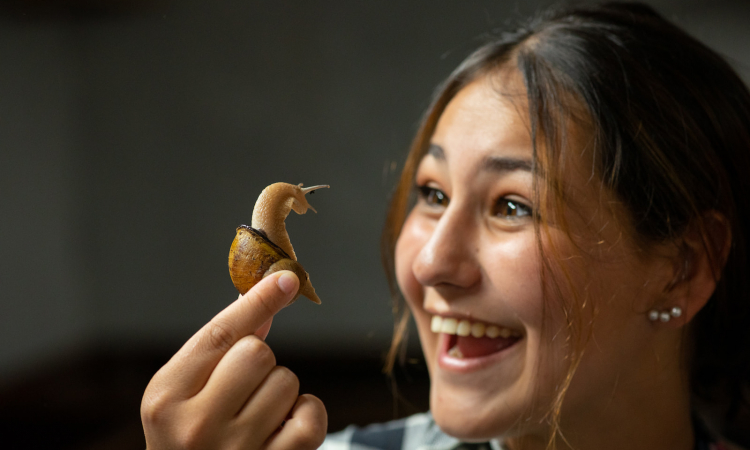Snails as a food source are astoundingly environmentally friendly compared to other protein sources. Does escargot have a role in the common household, or is it destined to remain a delicacy on the restaurant menu? I visited Goshen Snail Farm to find out.
If you are looking for the future of food trends, more specifically, the future of protein alternatives, you will most likely run into an article about insects as a protein source. In South Africa, we have a worm called the Mopani worm providing nutritious, cheap protein to local people. Snails have a similar history starting as a “poverty food” in Spain, France and Italy.

Michael Beetge from Goshen Snail Farm
Now known as a delicacy called escargot around the world. Haute cuisine chefs have given snails appreciation as a delicacy and food. As a kid, I recalled the fascination of people eating snails. It was just too mind-blowingly awful of an idea to imagine. However, my first experience tasting some of these critters as a starter created a love affair lasting a lifetime.
Gordon Ramsey preparing a salad with common garden snails
Cooking snails at home as a sustainable protein source
But, snails in tins, as a meal, not just six as a starter. Who would have thought? This was the case when I was served, as the main course, a bowl of snails at a friend’s house. A truly fond memory that inspired my visit to Goshen snail farm to investigate snails and their potential role in the future of food.
What type of snails do you buy in store?
First things first. What snails do we eat when we enjoy that escargot? The snails they grow at Goshen, the Helix aspersa maxima, is a direct relative of the common garden snail, just bigger. Michael indicated that the meat is as good as salmon on the nutrition table and is relatively low in cholesterol.

Snail breeding - Helix aspersa maxima
Is it more humane to eat snails than other meat?
The baby snails are raised inside for one month and then taken outside. The snails live 6-7 months till they are harvested. Sadly, they have a better quality of life than many other farm animals chickens at 5-7 weeks, pigs at 5-6 months and lambs at 4-12 months. Beef cattle are slaughtered at 18 months; their natural lifespan is 15-20 years.
Before you cook snails, you place them in hibernation by putting them in the fridge. To me, cooking hibernating snails is probably more humane than carting cattle to slaughterhouses.

Grazing Land Use
Sustainability of snail meat
Besides the fact that it seems more humane to eat snails. It turns out snails are quite a sustainable source of protein when we look at land use. Globally humans are using 3.28 billion hectares of land for grazing. The land required to produce snails is less than many other meat sources. You can raise 250 snails on one square meter (doubled if you place a board for them to sit on).

Land use per kilogram of food
According to Michael Beetge from Goshen Snail Farm, you can grow 32 tons of snails in 1/3 of a hectare per anum (Two cycles), 4.8kg of meat per square meter. On the opposite side of the spectrum, to grow lamb, you require a whopping 670m2 for beef and 326m2 of land to produce just 1kg of meat. To produce one kilogram of chicken, you require 12m2 and eggs 6m2.

Snails - Sustainable Land Use
Besides using snails for meat, they have some other exciting uses too. The eggs can be used to produce white caviar. The slime can be harvested and has shown to have cell regeneration properties and can, for example, be used as a face mask for burn victims. The shells can be used as calcium instead of fish meal.

Snail Eggs - White Caviar
OK, so the snail is a VERY sustainable source of protein. It is nutritionally good for us. But, most people only consume this as a delicacy. Is it even possible for me to cook and eat snails at home? Well yes. Check out this great video by Gordon Ramsey on how to cook the common garden snail. Please feel welcome to contact me and let me know how you enjoyed it.


